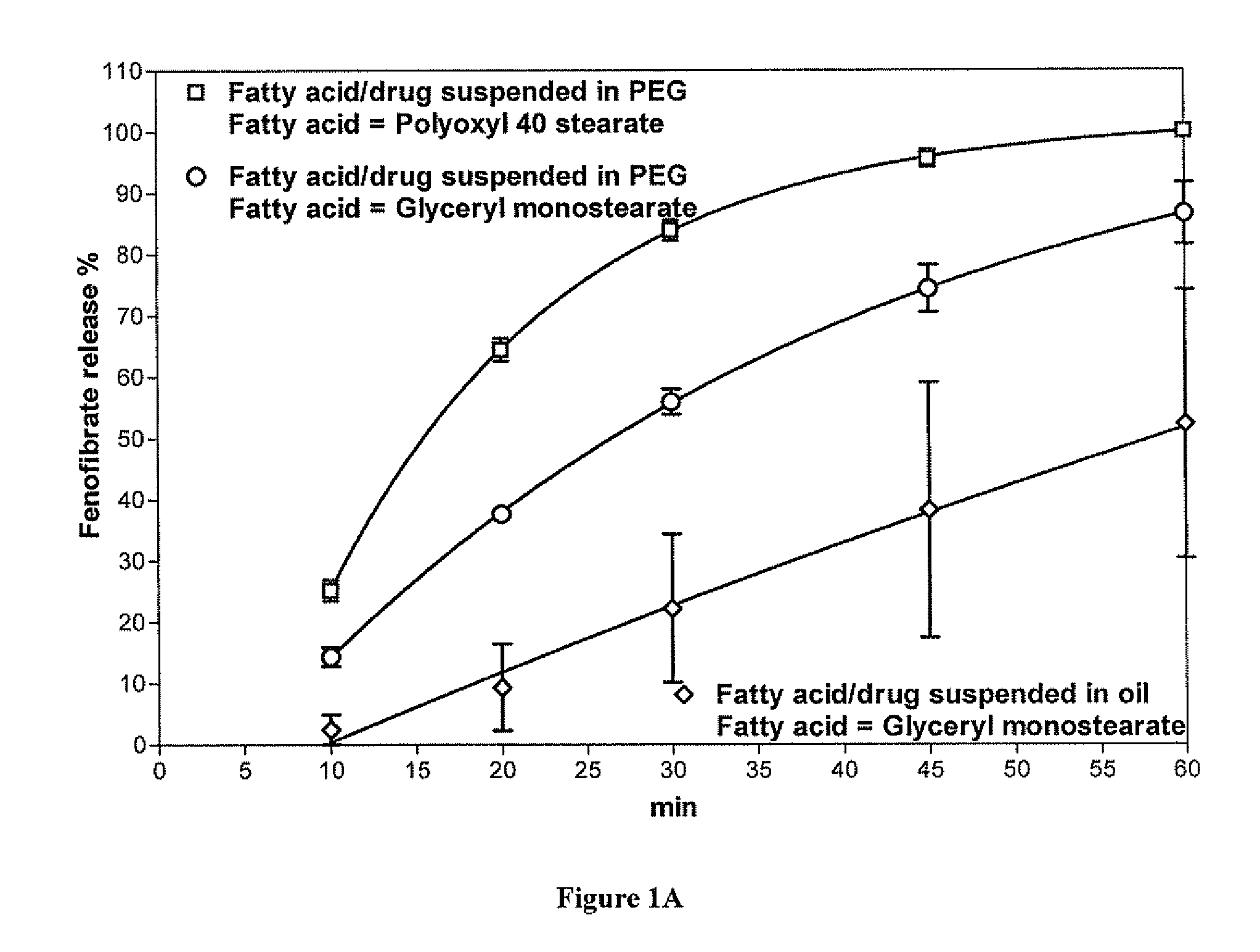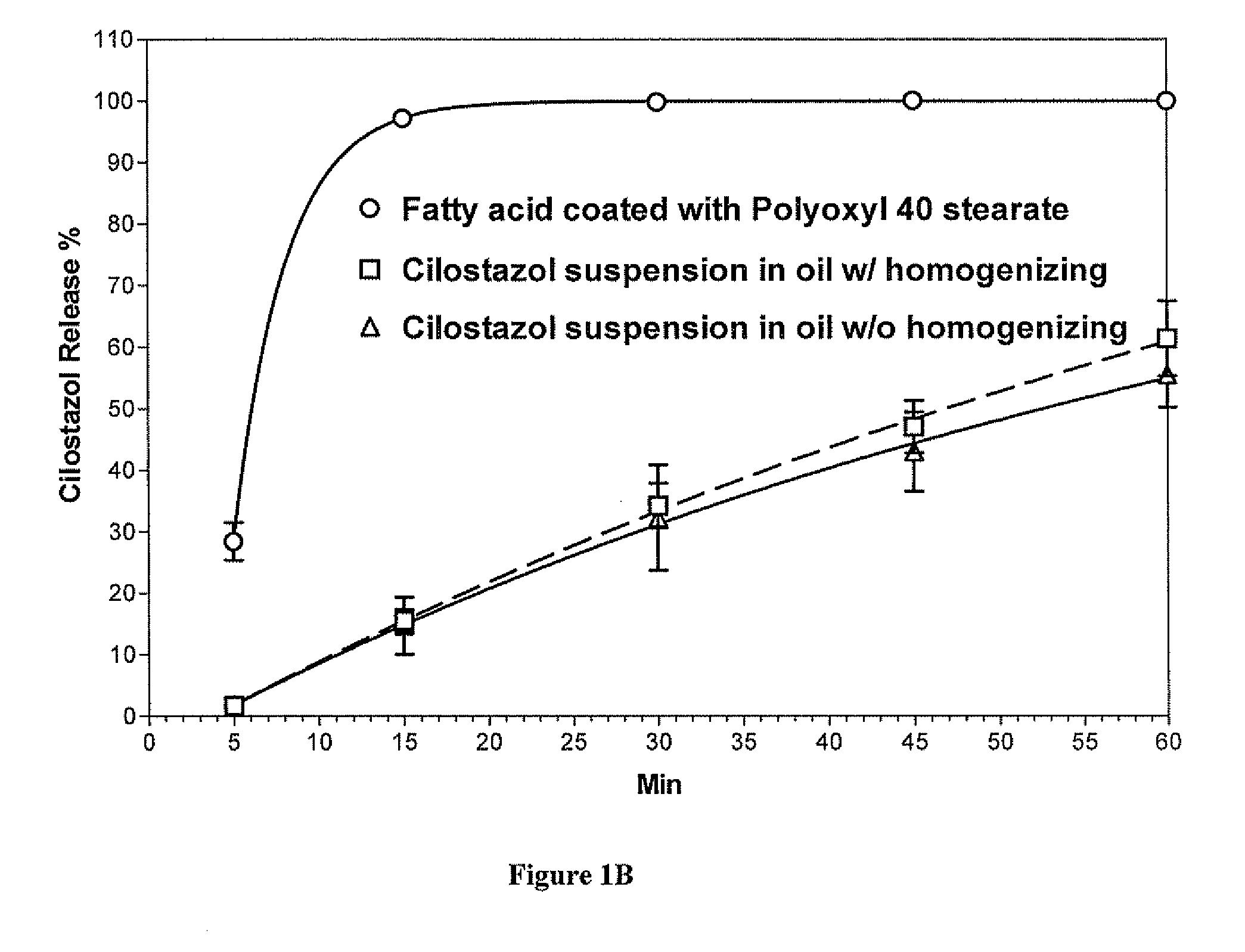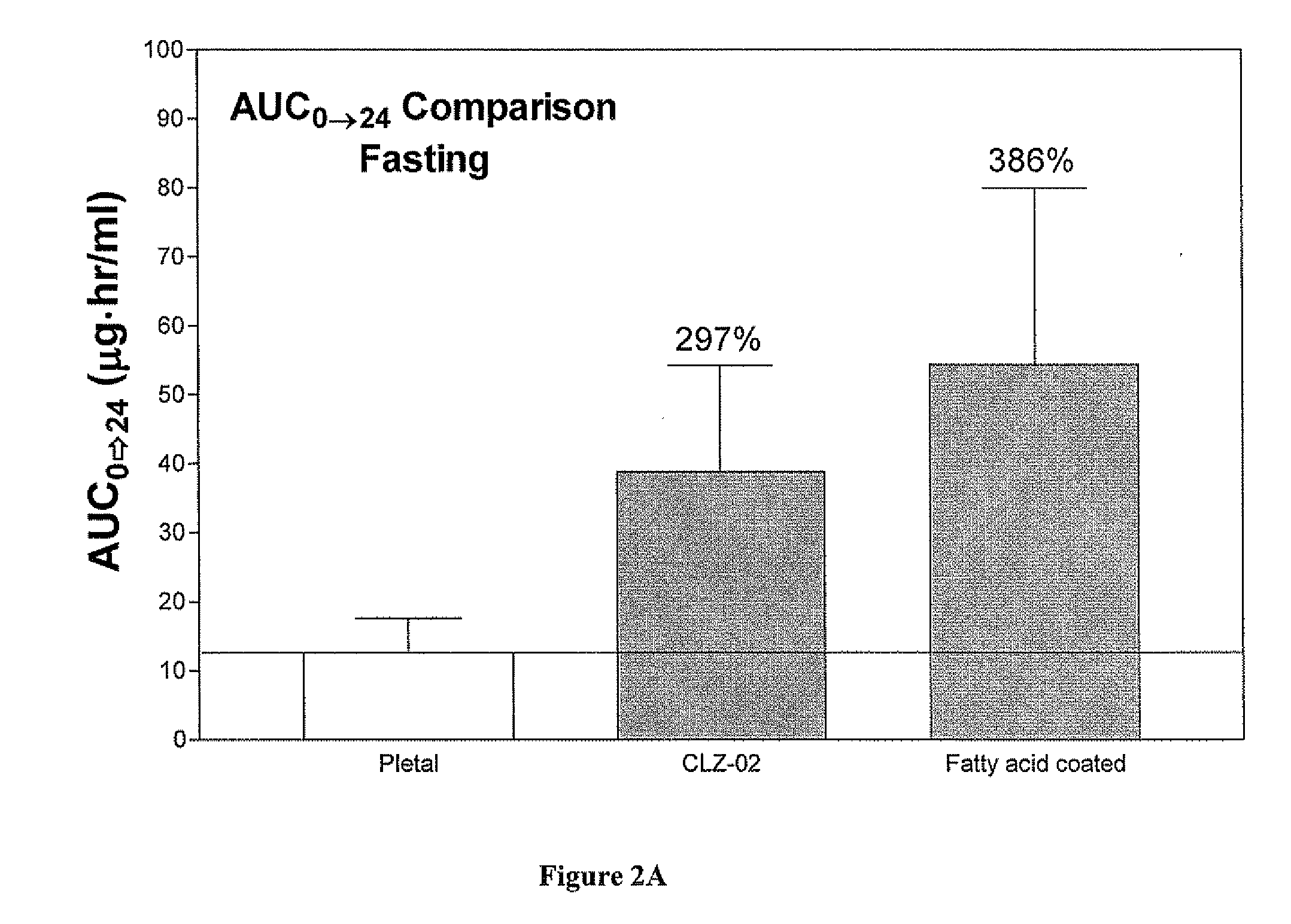Methods for enhancing the release and absorption of water insoluble active agents
a technology microparticles, which is applied in the field of enhanced release and absorption of water insoluble active agents, can solve the problems of low in vitro/in vivo dissolution, low absorption of active agents, and difficult formulation of poorly water soluble active agents, etc., and achieve enhanced absorption in vivo and enhanced dissolution profiles
- Summary
- Abstract
- Description
- Claims
- Application Information
AI Technical Summary
Benefits of technology
Problems solved by technology
Method used
Image
Examples
example 1
Preparation of Fatty Acid Coated Fenofibrate Particles
[0094]Microparticles containing a fatty acid and fenofibrate were prepared. Glyceryl monostearate was melted at 70° C. with mixing. Fenofibrate was added slowly to the molten glyceryl monostearate with stirring. The mixture was maintained at 70° C. and the hydrophilic carrier was added slowly with mixing at 350 rpm until the mixture was homogeneous. The mixture was cooled to 30° C. Following cooling, the mixture was homogenized until an aggregate-free suspension was obtained.
[0095]The composition of the drug and coating material mixture and the hydrophilic phase used to form the microparticles is shown in Table 1. Table 1. Composition of the drug and coating material mixture and hydrophilic phase
Drug and CoatingWeight % ofMaterial Mixturecompositiong / BatchPolyoxy 40 stearate or10.510.5Glyceryl monostearateFenofibrate14.514.5Sub total25.025.0Hydrophilic phase%g / BatchPEG 40057.057.0Water8.08.0Tween 2010.010.0Sub total75.075.0Total1...
example 2
In Vitro Release Profiles of Fatty Acid Coated Fenofibrate Particles
[0096]In vitro drug release studies were conducted using a USP dissolution apparatus II (paddles) at 75 rpm. Experiments were conducted in dissolution media at 37.0±0.5° C. in 1000 mL of 0.05 M sodium dodecyl sulfate. Samples were withdrawn and analyzed via HPLC having at UV detector. The detection wavelength was 286 nm. The results are shown in FIG. 1A. In vitro release studies of formulations containing fenofibrate showed approximately 85% dissolution of fenofibrate in 15 minutes and approximately 100% dissolution in 60 minutes, which is significantly faster than fenofibrate suspended in an oil-based carrier.
example 3
Preparation of Fatty Acid Coated Cilostazol Particles
[0097]Particles containing cilostazol (14.5% by weight) were prepared using the procedure and materials described above. The microparticles were formed by combining a mixture of glycerin ester of behenate (8.49% w / w), vitamin E acetate (8.49% w / w), sorbitan monostearate (Span 80, 1.00% w / w) and cilostazol with a hydrophilic carrier containing polyethylene glycol (54.74% w / w), water (8.43% w / w), Cremophor RH 40 (1 / 89% w / w), and Tween 20 (3.78% w / w). The mixture was homogenized using Ultra-Torrax followed by deaeration. The homogenized fatty acid suspension was passed through Ultra-Torrax three times to reduce the particle size distribution (<500 nm).
PUM
| Property | Measurement | Unit |
|---|---|---|
| Temperature | aaaaa | aaaaa |
| Temperature | aaaaa | aaaaa |
| Fraction | aaaaa | aaaaa |
Abstract
Description
Claims
Application Information
 Login to View More
Login to View More - R&D
- Intellectual Property
- Life Sciences
- Materials
- Tech Scout
- Unparalleled Data Quality
- Higher Quality Content
- 60% Fewer Hallucinations
Browse by: Latest US Patents, China's latest patents, Technical Efficacy Thesaurus, Application Domain, Technology Topic, Popular Technical Reports.
© 2025 PatSnap. All rights reserved.Legal|Privacy policy|Modern Slavery Act Transparency Statement|Sitemap|About US| Contact US: help@patsnap.com



